A shared love of mountains, K-drama and kimchi drew Rudolf Abraham, his wife and 13 year old daughter to South Korea this April, and it delivered a spectacular adventure holiday and then some.
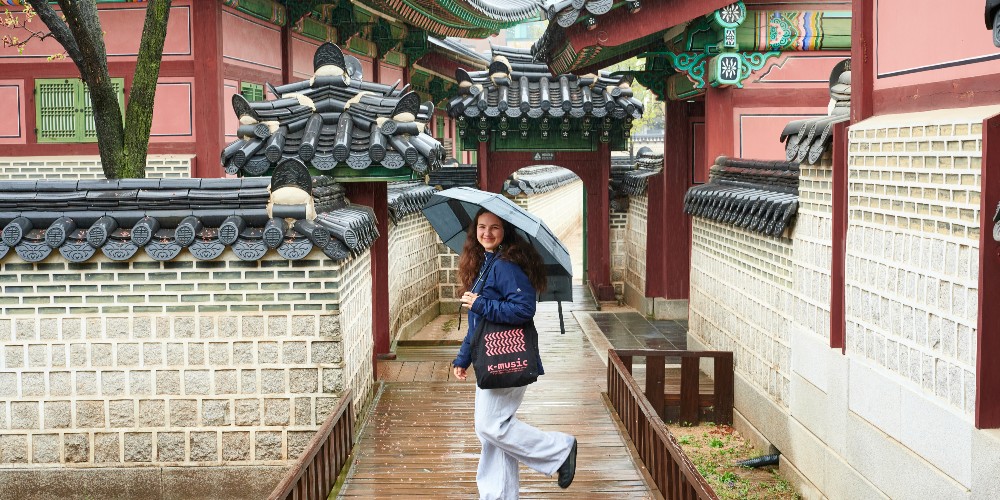
Changdeokgung Palace, Seoul, South Korea
Breaking with our usual Mediterranean habit, we wanted to go somewhere entirely new this spring and South Korea was somewhere we’d been desperate to visit for years for a whole slew of reasons, not least our shared passion for kimchi.
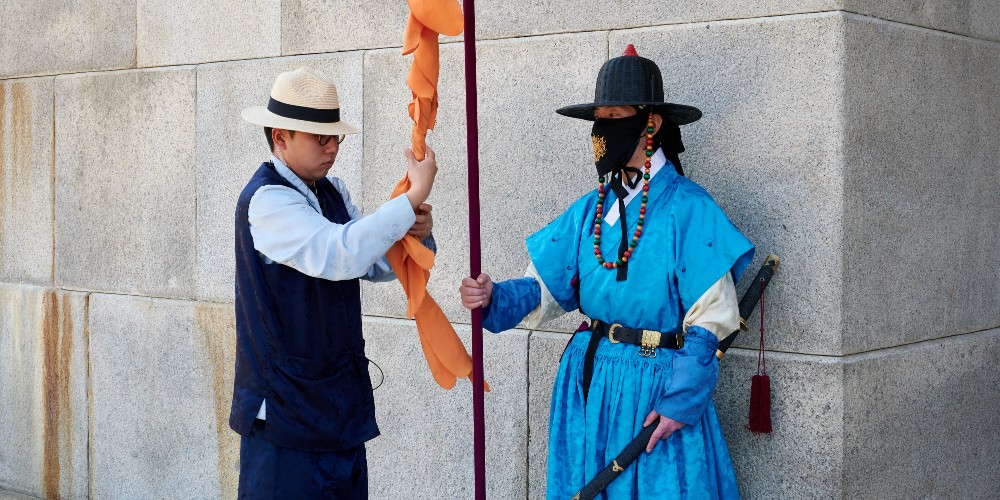
Changing guards, Gyongbokgung Palace, Seoul
See South Korea in cherry blossom season
Our trip began in the huge, fascinating, mind-blowing metropolis that is Seoul, early in cherry blossom season, as branches were turning to a mass of pinks and creams under a bright blue sky. Like many before us, our first stop was Gyongbokgung: the main royal palace of the Joseon Dynasty which ruled Korea from 1392 until 1910. Built at the end of the 14th century, it reveals itself in a succession of halls and pavilions decorated with brightly-painted wooden beams, ceilings and dragon-cornered roofs, all framed by broad, granite-paved courtyards, punctuated with lakes and
gardens. My advice is to join an English language tour to start with and then explore a little under your own steam. That’s certainly what we did, ending up by the main gate just in time to catch the changing of the palace guard.
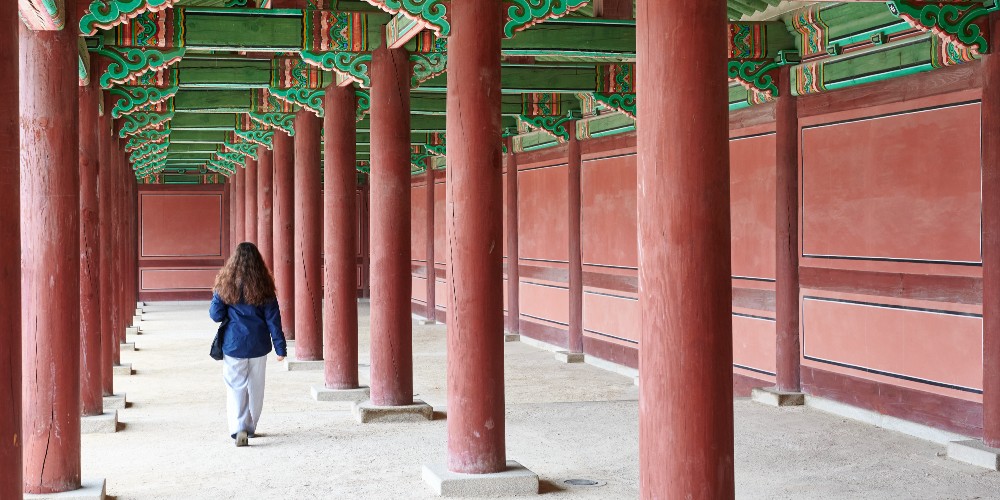
Changdeokgung Palace, Seoul, South Korea
Over the next few days we visited the Changdeokgung palace with its hidden garden, and then the Jogyesa temple, known for its gold Buddhas and courtyard roofed with coloured lanterns and pierced by a 450 year old Chinese scholar tree. We also followed the Cheonggyecheon stream in the city centre where Koreans picnic beside waterfalls spilling down from street level. And the National Museum of Korea – genuinely superb – was on our hit list too.

PSY hands, Gangnam, Seoul
Of course, Gangnam was another unmissable for its shopping malls and a screen which plays Gangnam Style on repeat beside a giant sculpture of PSY’s hands. Then we delved into the food section of huge Gwangjang Market, taking our potato pancakes to sit outside the neo-futuristic façade of Dongdaemun Design Plaza, the work of Zaha Hadid.

Bukhansen National Park, Seoul, South Korea
Where locals love to hike in Seoul
Rising above the northern suburbs of Seoul, Bukhansan National Park is very easy to reach from the city centre and essentially a great sprawl of granite peaks and boulders, with well-marked trails meandering across forested slopes.
We’d set our sights on Baegundae, the park’s highest peak and a hiking trail which would take us from west to east in the space of a day. Hiking is enormously popular in Korea, so there was no doubt which bus stop we needed – we just followed the crowds of excited locals all headed in roughly the same direction.
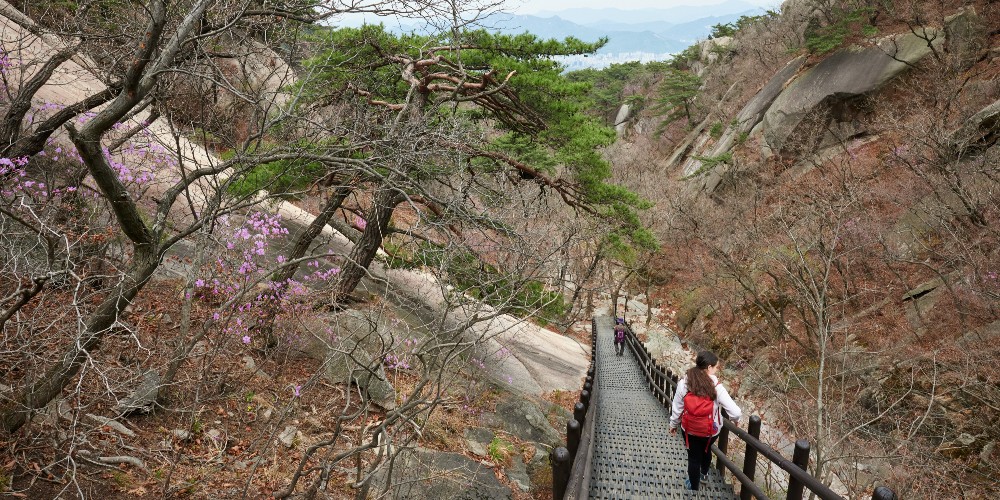
Hiking Bukhansan National Park, Seoul
The trail to Baegundae is wonderful; steep in places, but not too difficult, and certainly not boring for kids. We passed through a mass of blossoms, and a stout no-nonsense gateway in the walls of Bukhansen fortress – built to protect the Joseon palaces of Seoul against northern attacks. Then it took us around two hours of rocky trails to reach another section of the fortress walls on a ridge below Baegundae itself. Above this point, the trail to the peak becomes steeper, with steps or shallow footholds cut into the rock, and steel cables which you’ll definitely want to hold onto.
It’s quite exposed in places, so more suited to confident hikers and slightly older kids – my daughter was fine with it (she’s fairly used to hiking steep trails), although we also passed a Korean couple with a baby in a child-carrier near the top, who seemed more than comfortable with the route.
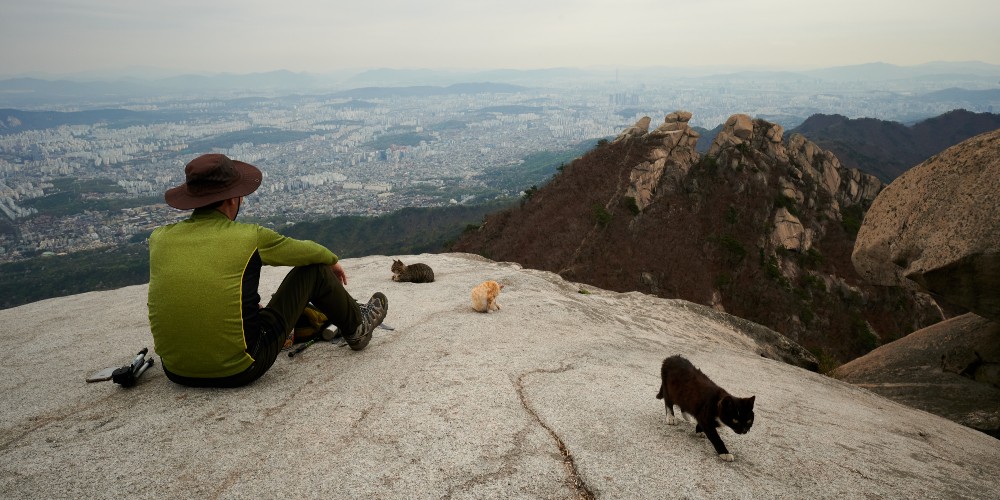
View from summit, Bukhansen National Park, Seoul
The views over the capital of South Korea are phenomenal
The views awaiting us at the summit were phenomenal, stretching out across rocky ridges towards wave after wave of skyscrapers which define Seoul’s different districts, all rendered toy-like by distance. We also found some very well-photographed stray cats sprawled on warm rocks below the summit, looking very pleased with themselves at being fed picnic scraps by the endless processions of hikers stopping to catch a breath, and the view, of course.
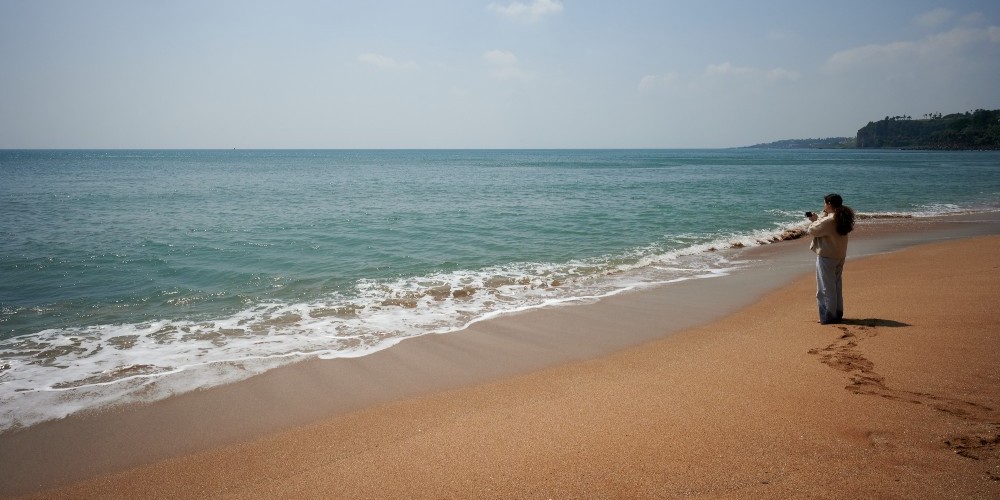
Beach, Jeju Island, South Korea
Visit Jeju Island for volcanos and tangerine groves
Jeju island lies around 80km off Korea’s southwest coast. It’s hugely popular with honeymooners, and home to sandy beaches, whacky museums, extraordinary landscapes, enigmatic stone statues and, quite probably, the finest tangerines you’ve ever tasted.
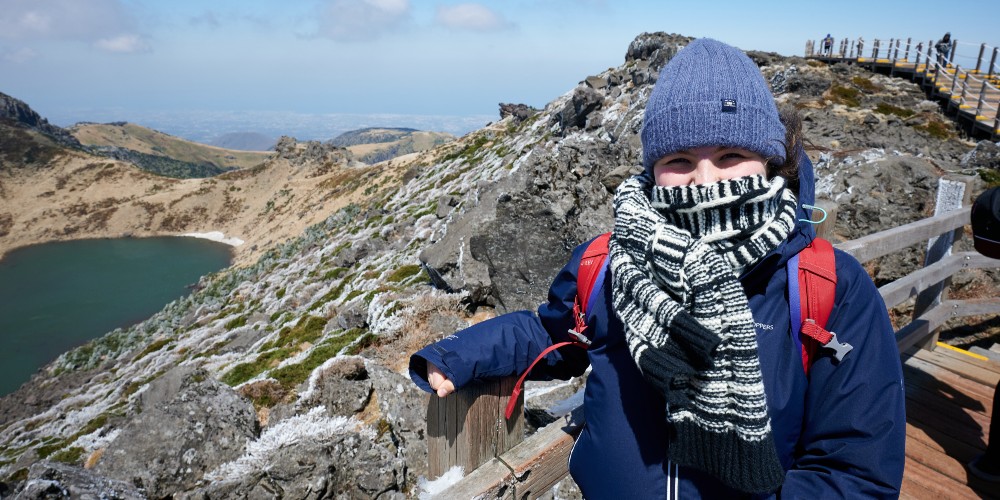
Hiking Hallasan Mountain, Jeju Island
At the centre of Jeju stands Hallasan, a massive shield volcano, its gentle slopes dotted with parasitic cones and plastered with an astonishingly rich array of plants. At 1950m above sea level, and the highest mountain in South Korea, it holds a rather special place in the hearts of most home-grown hikers. It’s also a national park, World Heritage site and Biosphere Reserve, and was our main reason for visiting Jeju. Yet we almost missed the mountain altogether, after a near-spectacular blunder on my part: a mandatory reservation system was introduced for the summit trails a couple of years ago, not something to discover for the first time the evening before your planned hike.
The best Hallasan hiking route with kids
There are two main routes up Hallasan: the Seongpanak – slightly longer and more sheltered – and the Gwaneumsa – shorter but steeper. We opted for the Seongpanak, and arriving early in the morning by taxi from Jeju city – after reservation codes and passports had been checked – we set off on the broad trail through mixed woodland.
Once up above the forest cover, emerging onto the steeper slopes of the summit cone, the wind hit us like a battering ram. We’d been told to expect some ice on the summit, so we were layered up, but the cold was still piercing. Although the path itself remained easy – wooden boardwalks and broad steps – and we soon reached the crater rim, overlooking Baengnokdam lake. By this point it was difficult to stand up, and the handrails were fringed with frost. Regardless, hikers continued to form a long, orderly queue for selfies in front of the summit stone.
Collect fresh tangerines on Jeju before (and after) your hike
Jeju also has some spectacular lava tubes, as well as basalt columns which plunge into the sea like an Asian Giant’s Causeway. We visited the latter, along with the Cheonjeyeon waterfalls, on our day in the south. Although it was really something much simpler which stole the show on that visit: Jeju’s juicy, sweet, and delicious tangerines. We bought a bag from a grove near the entrance to the falls, and ate them so quickly that we had to go back and buy another one after our walk.
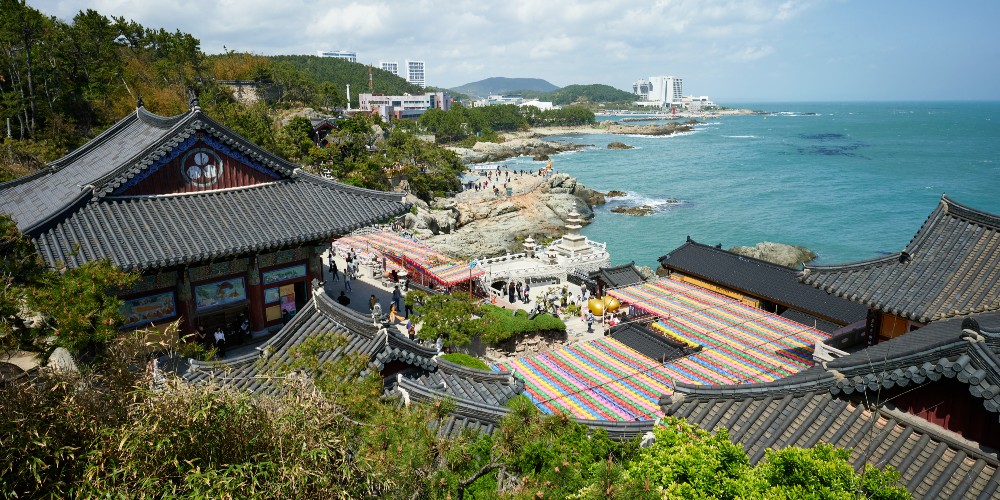
Haedong Yonggungsa Temple, Busan
Catch a bullet train to Busan: the largest port in South Korea
After Jeju, we spent the best part of three days in Busan, South Korea’s second city and largest port. One of the best of all introductions to Busan, is via the Busan Air Cruise: a cable car spanning the bay of Songdo beach. Go in the evening for fabulous views of the city and make sure you get one of the crystal floor cabins. On our first afternoon here we headed to Jagalchi market, which sprawls alongside Busan port in a succession of stalls selling every kind of fish and shellfish imaginable. In fact, it’s the largest seafood market in South Korea, which was quite interesting for us adult vegetarians, and quite nauseating for our vegetarian 13 year old.
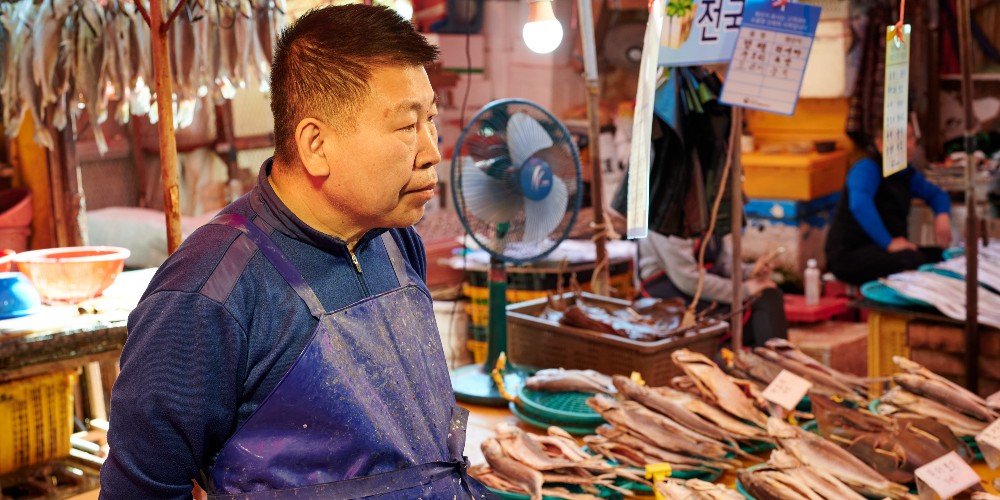
Jagalchi Market, Busan, South Korea
But it was nearby Gukje market that we headed to repeatedly for vegetarian bibimbap, served sizzling in cast iron bowls with lashings of kimchi and other side dishes. Korean food is marvellous and a reason to visit in itself. Along with all the seafood, warming broths and traditional barbecue, there’s endless street food to try from jeon (pancakes) made from leek, potato, seafood or mung-beans to gukhwa-ppang (flower-shaped pastries filled with sweet red bean paste).
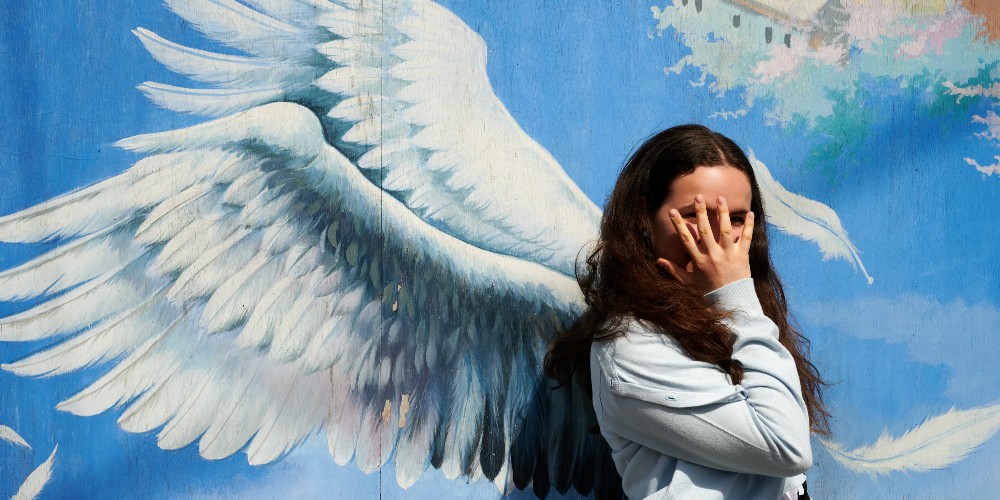
Gamcheon street art, Busan
Don’t miss colourful and cascading Gamcheon Cultural Village
We headed out to the Haedong Yonggungsa Temple in Busan too – unusual in that it was built by the sea, rather than in the mountains – returning by taxi over the 7km long Gwangan suspension bridge. And we also spent a day in the rather wonderful Gamcheon Cultural Village which lies west of the city centre in a sea of brightly coloured houses, cascading down the hillside like something transposed from Italy’s Amalfi coast.

Gamcheon Village, Busan
The steps here are steep and the streets narrow, but rewardingly, most lead to sculptures and art installations, as well as souvenir shops and galleries. Then all too soon, it was time to leave. We took the bullet train back to Seoul, travelling the length of South Korea in an incredibly smooth two and a half hours, before spending our final night in the city, out and about in the buzzy young neighbourhood of Hongdae.
How to plan a family holiday in South Korea
How to get there
Direct UK flights to Seoul take from 12 hours, 40 minutes
Where to stay
Hotel Gracery, Seoul, from £80 per person, per night
Book Hotel Gracery
Commodore Hotel Busan, family room from £90 (2 adults, 2 children)
Book Commodore Hotel Busan
LOTTE City Hotel Jeju, family room from £114 (2 adults, 2 children)
Book LOTTE City Hotel Jeju
Good to know
All travellers to South Korea require K-ETA (Electronic Travel Authorisation)
A pre-entry Q-code is also required
Don’t forget to apply for K-ETA and Q-code online before travel.
Seoul Metropolitan Subway is efficient and cheap. Signage is multi-lingual and, if you buy a T-Money card at the airport, you can top it up and use it for metro travel in Seoul, Busan and Jeju.
Book bullet trains between Seoul and Busan through Korail.
If hiking on Hallasan, remember to complete the advance reservation process.
Original images © Rudolf Abraham 2023


